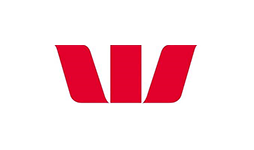Westpac takes first steps in cloud core system plan
 Australian bank Westpac has gone live with the first stages of its tech overhaul in Australia to move its core processes from its own premises and into the cloud.
Australian bank Westpac has gone live with the first stages of its tech overhaul in Australia to move its core processes from its own premises and into the cloud.
According to the Australian Financial Review, it “has already moved two core banking processes to the cloud since the end of March, and intends to have moved around 20 more within the next eight months”. It also “estimates internally that 70% of its business applications will move to these cloud environments over the next ten years”.
Australian Financial Review does not name any of the core banking processes, but the Westpac group (including St George Bank, Bank of Melbourne and BankSA subsidiaries) is one of the two remaining users of the Hogan core system in Australia. The other one is ANZ.
Banking Technology contacted Westpac for specific names of the systems. A spokesperson declined to provide the names but says: “The intent is to migrate our core systems and their supporting processes to the cloud overtime. The current applications in the offsite private cloud include those that support the commercial loans process and credit risk analytics. Throughout 2017 further applications / business processes will be migrated including transaction loan processing, content management and data management.”
Back in January, St George Bank is understood to have finally gone live with its new core banking software, CSC’s Celeriti. Eventually, Celeriti will be implemented at Westpac too, Banking Technology understands.
In this latest development, Westpac chief information officer Dave Curran told the Australian Financial Review it is “going all in with the core systems that run the bank’s operations as it will offer much greater flexibility, efficiency and value for money”.
Curran says this is the early stages of a decade-long plan to eventually run a large part of its operations in the public clouds of firms like Amazon Web Services (AWS).
The Australian Financial Review says in late March the bank went live with two applications in production on its offsite private cloud, its business bank “Deal Tracker” application and its risk decision-making engine. Curran says he is targeting 40% of Westpac’s business applications to be on offsite private cloud by 2020, with the “intention to move material workloads such as online banking and a payments platform to the cloud”.
Internally, the Australian Financial Review says Westpac will continue to increase its use of cloud solutions from tech giants, such as consumer services like Office 365, Exchange and SharePoint from Microsoft Azure, numerous AWS platforms, Software-as-a-Service (SaaS) products from Oracle and platform services like IBM’s BlueMix and SoftLayer.
Elsewhere, the bank has been involved in a number of upgrades.
It embarked on a major project to roll out a new data integration solution – Oracle Customer Hub; and it trialled the use of artificial intelligence (AI) in its digital banking systems.
In fact, back in 2014, Banking Technology reported that Westpac signed up IBM in a five-year deal to assist a major digital banking push in New Zealand. The bank plans to use IBM’s private cloud technology to build mobile services and a social media presence.











































